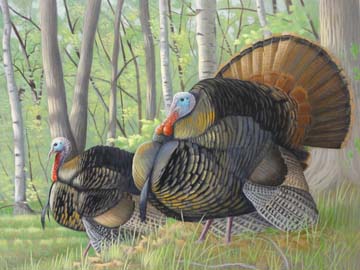The number of officially endangered species in Turkey now stands at 179, according to a report by the World Wide Fund for Nature (WWF). Major threats to wildlife include illegal hunting, pollution and overbuilding. Tolga Baştak, president of WWF-Turkey, sent a press release to Turkish media on Monday in honor of World Wildlife Day, established by the UN General Assembly last December to “celebrate the many beautiful and varied forms of wild fauna and flora and to raise awareness of the multitude of benefits that conservation provides to people.” Baştak stated that wildlife in Turkey is in need of human protection because it “is increasingly trapped in confined spaces as human domains expand.” Cranes, dolphins, grouper fish, reed cats and sea turtles are among the most endangered species in Turkey, the report says.
Speaking with Sunday's Zaman, Professor Sedat Kalem, WWF-Turkey conservation director, said the International Union for Conservation of Nature (IUCN) reviewed the list of endangered species once every two years. “The number [of designated endangered species] in Turkey was 134 in 2012. By 2014, this number had increased to 179,” Kalem said. He listed the major reasons behind the increase as illegal hunting, construction in areas vital for wildlife such as forests and wetlands, mining and the destruction of natural areas for agricultural activities.
However, Kalem added that although endangered species in Turkey continue to face the threat of extinction, significant progress has also been made to protect wildlife in the country. WWF-Turkey works in collaboration with local and regional administrations, experts and academics to reduce the number of endangered species, the director continued, giving examples such as the organization's monitoring and research in conservation efforts for sea turtles in the Akyatan dune in Karataş, a district of the Mediterranean city of Adana. WWF-Turkey also campaigned for the protection of dolphins in marine protected areas on Kekova Island, on Turkey's Lycian coast in the Mediterranean and on the Dilek Peninsula in the Aegean Sea.
Turkey is one of the countries that signed the Convention on International Trade in Endangered Species of Wild Flora and Fauna (CITES), one of the most important and effective mechanisms regulating the practice of conservation of more than 35,000 species. And yet, Kalem told Sunday's Zaman, Turkey continues to lose endangered species and their living spaces despite signing conventions like CITES and the Bern Convention on the Conservation of European Wildlife and Natural Habitats. “Collaboration between public institutions, civil society, the scientific world and the business community is a must to reverse the trend,” Kalem stressed.
The future decline in wildlife diversity may be graver than even Kalem dares to suggest. The WWF-Turkey official does not mention drought as one of the major threats for endangered species in Turkey. However, in an interview on Feb. 2 with Sunday's Zaman, Berivan Dural -- another official from WWF-Turkey -- said that “Turkey will become increasingly vulnerable to the effects of drought because plans for water infrastructure are implemented without careful consideration of the scale of river basins.” She explained that water transfer projects on river basins and dams often impede the connection of rivers and therefore pose a risk to ecosystems whose balance is crucial to the survival of wild animals.
In the last 50 years, wetlands three times the size Lake Van in eastern Turkey have been lost due to drought. Furthermore, according to WWF-Turkey, 74 percent of Turkey's reserves of water are used for agriculture, 15 percent for households and 11 percent for industrial production -- without any provision whatsoever for the preservation of wildlife.
Source: Sunday's Zaman, 9 March 2014
http://www.todayszaman.com/news-341410-number-of-endangered-species-in-…

- Login om te reageren
